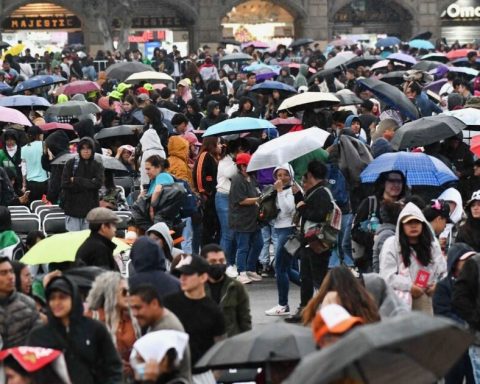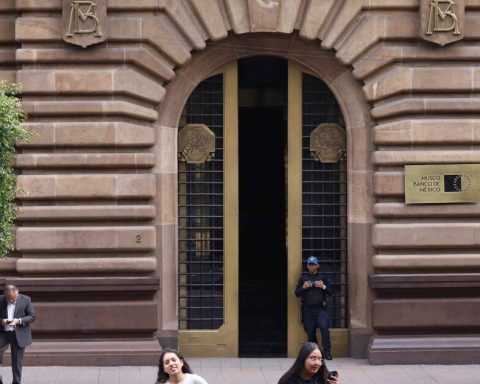R
I received a severe emotional shock when I learned of the death of the anthropologist Mercedes Olivera, an outstanding progressive intellectual who became a fervent feminist and revolutionary at heart. With the disappearance of Mercedes there is no longer a single member of the group of social anthropologists that was called The magnificentalluding to an American film that was intended to be a remake of the great japanese film the seven samurai. The magnificent They were Ángel Palerm, Guillermo Bonfil, Margarita Nolasco, Enrique Valencia, Arturo Warman, Mercedes, and there were those who added Daniel Cazés to the list.
Since I was very young, it has caught my attention that various intellectuals, and other less fortunate cultivators of the intellect, delve into the essence of what is Mexican. These thinkers generally had very little knowledge of the anthropological disciplines and were usually highly urbanized thinkers, most especially in Mexico City. I remember that my own uncle, Salvador Reyes Nevares, racked his brains trying to find that mysterious essence, which until now has not been located.
On the contrary, very little attention was paid to a great variety of studies that had been elaborated by notable anthropologists such as Gonzalo Aguirre Beltrán, Julio de la Fuente, Ricardo Pozas, Bárbara Dahlgren, Johanna Faulhaber and many more that showed very seriously, with academic discipline and works well-conducted field studies, which was the cultural diversity of Mexico and, therefore, its notorious complexity. However, the investigations of these specialists were rather marginalized, since the post-Cardenista governments promoted the ignorance of anthropological analyzes, since they revealed the precarious conditions in which the majority of the country’s inhabitants lived.
In the 1960s, at the National Institute of Anthropology and History itself, a culturalist conception prevailed, in which it was intended to characterize, above all, peasant and indigenous groups as procreators of their own backwardness without mentioning the structural roots of that backwardness, the which were characteristic of a dependent and underdeveloped capitalism. As a solution to the problem, government sectors postulated the need to rescue vulnerable groups, which was equivalent, according to this conception, to Mexicanizing them.
It is at that time when a group of young people who had studied at the National School of Anthropology and History and who were already professionals and teachers, formed the group of The magnificent and they flatly opposed the modernizing paradigms coming from the governments in which the official party proclaimed monoculturalism. The magnificent they were constantly insulted and were even accused of being agents of the Central Intelligence Agency and therefore servants of Yankee imperialism.
The magnificent They were a kind of apostates from Marxism, since they considered that this current was Eurocentric and based on this, their teachings only had a partial landing in Latin America. Palerm and his followers soon found a contingent of very important allies among the students who had joined the ENAH since 1965 and who were usually young people who were very dissatisfied with the situation in the country; they were influenced by the emancipation of the colonial peoples and the Chinese and Cuban revolutions, and not so much by the Soviet one. Alongside most of the very young students, there were older youths more experienced in political struggles, such as Virgilio Dante Caballero, Adolfo Sánchez Rebolledo and Rafael Mendoza Villela, who, like child heroes, continued to be wrapped in a flag, in this case the of Marxism. Discrepancies with the magnificent
which were very fruitful and both the Marxists and the Bonfilianos derived from this process useful teachings. Mercedes Olivera, a notable teacher and activist, became radicalized and put aside populist-type ideologies that had initially guided her academic and political exercises.
When the student movement of 1968 took place, The magnificent and the Marxists managed to maintain a strong alliance facing the most reactionary forces and thereby revitalized the progressive trajectory of ENAH and INAH. In this flow of events, the presence of Mercedes was total and she became director of the school where she had studied after a campaign in which she served as a candidate for that position facing me and I think she beat me by technical knockout. Later, she, Mercedes, moved to Chiapas, where she developed a great job, especially in the field of feminism and vigorously supporting the struggles of the Zapatista Army of National Liberation (EZLN).
Today, with the cold showers of postmodernism and what Cornelius Castoriadis called generalized conformism, activist anthropologists like Mercedes have been disappearing and now we find a considerable number of lazy anthropologists who do not even fight for their labor rights. Unfortunately, Mercedes has physically disappeared, but her spirit should encourage the new generations.














